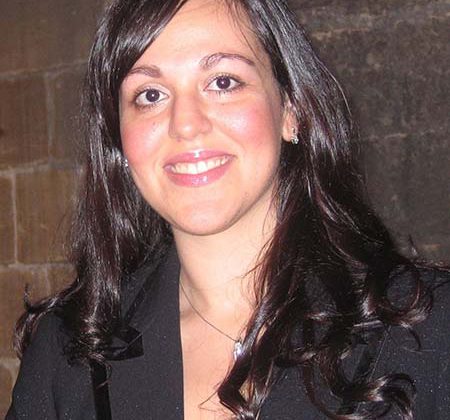Grape Expectations
by Albert Cilia-Vincenti
“There is simply nothing else that so perfectly encapsulates physical sensation, social well-being and aesthetic exploration at the same time”
Hugh Johnson (pre-eminent contemporary wine-writer)
Bordeaux & London
This is the second of a two part series on how the 18th and 19th century British middle classes shaped the wine industry
The wine trade flourished when Britain made peace with France in 1713. Claret was expensive, but rich Londoners (also big spenders on theatres and music produced by fashionable immigrants like Handel) consumed large quantities. Sir Robert Walpole, Britain’s first prime minister, is said to have smuggled his favourite French wines in navy ships. The most expensive one he bought was old Burgundy, but that (as now) was only available in tiny quantities, so he relied largely on claret (Margaux and Lafite). In a single year his wine bill amounted to over £1,200 (£100,000 in today’s money). British consumers bought the best stuff and paid top prices – they were paying five times as much for their claret as the wine’s other main customers, the Dutch, who preferred the cheaper lower-grade stuff. Claret was no longer drunk, or even bought, when young. In 1714, Walpole bought classier bottles of the 1706 vintage. His sophistication was echoed by that of his clerk, who could spell correctly all four top First Growth estates.
Claret was still largely for the very well-off, well into the 19th century. In “Every Man His Own Butler”, published in 1839, Cyrus Redding, a wine merchant and author, wrote “claret for a bishop, port for a rector, currant for a curate and gin for the clerk”. At that time, for a tradesman, the fine-wine merchant was an unusually respectable figure. Anthony Trollope described one of them, “Mr Prettyman”, as “a handsome old gentleman with grey hair, always well-dressed”. Indeed, three of his contemporaries survive till this very day – Corney & Barrow in the City of London, Justerini & Brooks and Berry Bros & Rudd in St James’s Street.
Claret was beginning to flow down the social hierarchy, and a free-trade treaty between Britain and France in 1860 drastically reduced duty on French wines, encouraging the British middle classes to ape their social superiors. Also that year, the British Chancellor of the Exchequer, William Gladstone, keen to stiffen the nation’s moral spine, cut the duty on table wine to 40% of that on the more intoxicating fortified wines such as port and sherry. The year after came the Single Bottle Act, allowing grocers to sell wine by the bottle. A much-despised, enormously popular drink called “grocers’ claret” emerged, resulting in sales of cheap Bordeaux wine to rise six-fold to 36 million bottles between 1859 and 1878. The Gilbey family franchised 2,000 grocers licensed to sell wine, largely claret, and became one of the most remarkable commercial dynasties of Victorian England.
As the middle classes turned to claret, the upper classes abandoned this increasingly common tipple in favour of Hock (German white wine made from Riesling grapes) and Champagne. Because fashion determines price, the records of wine merchants Berry Bros & Rudd reveal that the price, a hundred years ago, of top Hock wines exceeded that of top Bordeaux reds, Margaux and Latour of same vintage … unbelievable today.
The fortunes of the claret business turned in the late 1870s and 1880s when mildew tainted and ruined the wines. Lafite’s reputation, for instance, went downhill when the 1884 vintage turned mouldy after only a couple of years in bottle. At the same time, the phylloxera virus started devastating Bordeaux’s vineyards.
Claret recovered in 1960 when the splendid 1959 vintage coincided with the arrival of big American buyers, and its popularity has risen steadily since. London remains at the centre of the fine wine trade, and home of organisations such as the Institute of Masters of Wine, of Decanter and World of Fine Wine magazines, and most of the world’s biggest wine auctions. Liv-Ex, the world’s first fine wine stock-market, is based in London, and its records show that nine-tenths of the wine trade is still in top (“classed growths”) clarets. Newcomers from vineyards in a dozen countries trying to launch their finest wines on the world market come to London first for validation. Yet, though London may still have much knowledge as well as the market, the British, as customers, may be past their best. More than half of fine wine sold globally, by value, is now bought by Asians, most of which are from China and Hong Kong. No wonder therefore that fifteen years ago Berry Bros & Rudd, the three hundred year-old London wine merchant, opened a shop in Hong Kong.
As wealth has shifted from Europe and America to China, First Growth clarets have become one of the status symbols of Asian multimillionaires. Inevitably anything that is scarce and fashionable is bound to become very expensive, and these very top clarets are now out of reach of average wine-lovers’ pockets. However, there is no proportionality between price paid and gustatory pleasure offered, and a €1,000 wine will not provide twenty times the aromatic and flavour excitement offered by a €50 one. However whether wine-label romantics like it or not, there is definitely a quality-price ratio for practically anything on earth. The blind-tasting format of our “Il-Qatra” wine club is based on this principle, educating members that when you haven’t been influenced by the sight of the bottle labels, you might well prefer a cheaper wine to a more expensive one.


